
Title: The Additive Manufacturing in the biomedical sector: applications and future perspectives
Plenary Speaker
Prof. Ilaria Cacciotti
University of Rome Niccolò Cusano, Italy
Abstract
The additive manufacturing has found application in the biomedical sector, mainly in the odontoiatric, neurosurgery, ortophedic and craniomaxillofacial ones, where the number of publications has regularly grown over the last few years [Murtezani et al., 2022]. Five major areas for the biomedical application can be identified: medical models (presurgery training [Saceleanu et sl., 2021]), surgical implants, surgical guides, external aids, bio-manufacturing [Tuomi et al., 2014]. 3D printing presents several advantages with respect to the traditional production approaches: shortened operation time, less blood loss, reduced morbidity of surgical interventions, less infection/inflammation occurrence, higher aestethical results,better correspondence between the custom made implant and the defect contours [Al-Moraissi et al., 2015].
Nowadays, despite many promising results from several in vitro and in vivo studies, the gap between the 3D printing scientific research in the biomedical sector and its translation to the clinical practice is still wide [Di Piazza et al., 2021], also due to the complex regulation aspects and the recent EU Regulation on medical devicesand on invitro diagnostics. Two main challenges in developing the next-generation of AM processes can be cited: the improvement in the speed and resolution of AM processes with lower energy consumption, and the development of new 3D printingmaterials with tunable mechanical, chemical, physical properties.
The main 3D printing drawback consists in the high cost of acquisition. However, currently many efforts have been and are aimed at reducing the overall costs, decreasing prices of both the 3DP hardware and of the used materials.
Biography
Ilaria Cacciotti is Full Professor of Biomaterials & Tissue Engineering and Materials Science & Technology at University of Rome "Niccolò Cusano". She graduated in Medical Engineering at the University of Rome “Tor Vergata” (Master of Science Award ‘Fondazione Raeli’), completed the Ph.D in Materials Engineering (Ph.D Thesis Award ‘Marco Ramoni 2011, Ph.D Thesis AIMAT Award 2012) and obtained the II Level Master degrees in “Forensic Genetics” and in "Protection against CBRNe events". She is expert in the synthesis/processing/characterisation of biocompatible nanostructured materials, particularly for applications in the biomedical/environmental/agri-food sectors. She is member of the Editorial Board of several international journals, including Applied Science-MDPI, Applied Surface Science Advances-Elsevier, Frontiers in Biomaterials, Open Journal of Materials Science- Bentham Science. For her research activity, she received more than 20 awards, incuding the L’ORÉAL-UNESCO Italy for Women and Science 2011

Title: Navigating the Global Additive Manufacturing Standards Landscape
Keynote Speaker
Dr. Alex Liu
Head of Additive Manufacturing Programs, Asia Region - ASTM International, Singapore
Abstract
Access to and adopting standards is critical in overcoming barriers to trade, contribute and accelerate economic growth, and aid in developing national standards. Through the MoU program with ASTM, India can adopt ASTM standards as their national standards and develop policies and regulatory framework to regulate the AM industry. The list of AM standards will continue to grow in pace with the advancement of AM technology, with key stakeholders widely recognized as Industry, Government, followed by Academia.
Biography
Dr. Alexander Liu is Head of Additive Manufacturing Programs, Asia region at ASTM International responsible for ASTM AM center of excellence (CoE) and various AM programs Asia. He is based in Singapore and works closely with industries and government agencies, helping them to utilize standards and adopt AM. He has a B.Eng in Mechatronics and Robotics Automation and a PhD in Mechanical Engineering. With more than 14 years of experience on AM processes and materials, he received a total of 10 awards and patents in the area of additive manufacturing. He is active within the AM community and continues to review and publish journals as well as making making technical and business presentations around Asia.

Title: Elastic shape memory materials for comfort fitting via 3D printing
Keynote Speaker
Prof. Huang Wei Min
Nanyang Technological University, Singapore
Abstract
Customization is meant to fit for individuals. Current approaches for customized wearable items, including many biomedical devices, require precise measurement as the first step and then individually produced. 3D printing appears to be just right for the second step.
The shape memory materials (SMMs) are featured by the shape memory effect (SME), so that they are able to achieve one-size-for-all. Indeed, we have seen applications of SMMs in various types of splints for precise fitting of individuals without the first step of measurement. However, most of them are made of polycaprolactone (PCL), which is stiff at room/body temperature, since the purpose of splints is mostly meant for providing strong support. As such, any further movement of that part of our body is restricted.
Recently, we have developed two types of elastic SMMs, one is thermo-set and the other is thermo-plastic. Both can be used for comfort fitting and for 3D printing. Furthermore, the stiffness of them can be tailored.
In this talk, we will introduce these two materials, which may be considered as an elastic version of PCL, so that fitting can be carried out at around body temperature. We will present some typical applications of these materials for comfort fitting in biomedical applications.
Biography
Dr Wei Min Huang is currently an Associate Professor (tenured) at the School of Mechanical and Aerospace Engineering, Nanyang Technological University, Singapore. With over 20 years of experience on various shape memory materials (alloy, polymer, composite and hybrid), he has published over 180 papers in journals, such as Accounts of Chemical Research, Advanced Drug Delivery Reviews, and Materials Today, and has been invited to review manuscripts from over 200 international journals (including Progress in Polymer Science, Advanced Materials, Advanced functional materials, and Biomaterials, etc), project proposals from American Chemical Society, Hong Kong Research Grants Council, etc, and book proposals from CRC and Elsevier. He has published two books (Thin film shape memory alloys – fundamentals and device applications, and Polyurethane shape memory polymers) and is currently on the editorial board of over two dozens of international journals.
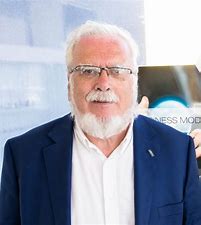
Title: Changing the Paradigm – 3d printing is more than shape
Keynote Speaker
Prof. Geoffrey R Mitchell
Polytechnic Institute of Leiria, Portugal
Abstract
Direct Digital manufacturing is a family of technologies which enable a product with a digital definition to be fabricated directly without the use of complex tooling and moulds. This enables the mass personalisation of products as the design can be fixed immediately prior to fabrication with clear application in the field of medical devices. However, much of the developments of direct digital manufacturing focuses on simply specifying the shape of the product and this limited scope throws away many of the particular advantages of direct digital manufacturing. This presentation is focused on remedying this situation so that the digital specification of the fabricated product includes properties as well as the form of the product. We use in-situ time-resolving small-angle x-ray scattering measurements performed at the ALBA synchrotron light source in Barcelona to evaluate the control that can be exerted on the morphology of a semi-crystalline polymer during extruder based 3d printing. We use this as a methodology of printing patterns of morphology of the polymer to realise patterns of properties of the polymeric material, specifically the modulus of the polymer. We give examples of test pieces and products produced in this manner which contain spatial variation of the properties and we discuss the resultant properties. We highlight the possibilities of developing this technology to produce practical products
Biography
Geoffrey Mitchell is Professor and Vice-Director of the Centre for Rapid and Sustainable Product Development at the Polytechnic Institute Leiria in Portugal. He is passionate about the opportunities provided by direct digital manufacturing. Geoffrey Mitchell carried out his doctoral work at the University of Cambridge in the UK and subsequently held post-doctoral fellowships at Cambridge and at Hokkaido University in Japan. Prior to his current position he was Professor of Polymer Physics at the University of Reading, UK and the founding Director of the Centre for Advanced Microscopy at Reading. His research work bridges physics, biology, chemistry and technology and he is a Fellow of both the Institute of Physics and the Royal Society of Chemistry as well as the Royal Society for the Encouragement of Arts, Manufactures and Commerce and a Member of the Institute for Physics and Engineering of Medicine. He is a Visiting Medical Physicist at the Oxford University Hospitals NHS Foundation Trust, Oxford UK.
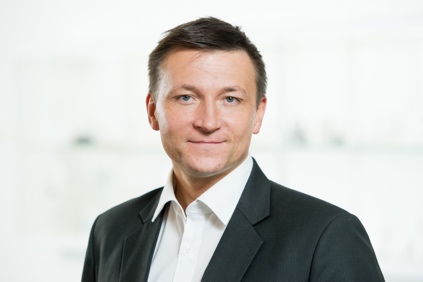
Title: Turning AM potentials into successful business models
Keynote Speaker
Gregor Reischle
AM Entrepreneur, EX TUV SUD, Germany
Abstract
The complexity of business design within Additive Manufacturing requires disciplined entrepreneurship. Todays available standards and methods enable executive leaders and their team members to turn the value of AM into business. My speech will highlight case studies and methods, on how to minimise the implementation complexity of AM technologies and turn the technological potentials into value within business models.
I will answer the following two questions:
- How to build winning business models using AM?
- How to qualify and certify AM production processes to safe costs and succeed within high deemanding industries?
Biography
Gregor’s AM process expertise reaches back to 2008, when he established one of the first am serial process within the dental industry. Here he developed his passion for business modeling and lifed quality assurance within am production sites. Gregor continued his AM expierence jorney as an application engineer and consultant at EOS GmbH from 2010-2017. Followed by the Global Head of the TÜV SÜD Additive Manufacturing 2017-2021, where he initiated the first coheerent certification sheeme within Additive Manufacturing. In 2021, Gregor managed to found his “consulting” & “start up inncubator” company, names AM Entrepreneur. The services are in full steam developmend, and relaying on Gregors expertrise. He audited, trained, and consulted more than 100 international AM production sites. Gregor leads and writes the following global standardisation projects: • ISO ASTM 52920 Additive manufacturing — Qualification principles — Requirements for industrial additive manufacturing processes and production sites. • ISO ASTM PWI 52954 Additive manufacturing — Qualification principles — AM process category specific main influencing factors to be considered in risk evaluation. • ISO/ASTM 52939 Additive manufacturing – for construction — Qualification principle — Process requirements for structural and non-structural elements and systems.
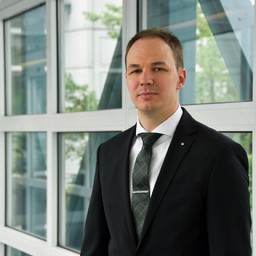
Title: Industrial and Social Impacts of Additive Manufacturing
Keynote Speaker
Dr. Julian Polte
Fraunhofer Institute for Production Systems and Design Technology IPK, Germany
Abstract
21st century production and related conventional manufacturing technologies, processchain design, educationand thinking led to strong supply chain dependences, limitedinnovation capabilities and insufficient resilience. Additive Manufacturing offers a huge potential to drive industry in the next century of non-mechanical production. A paradigm shift from mechanical to non-mechanical thinking and a redefinition of production technology is essential to unleash Additive Manufacturing's capabilities and bridge the gap to future needs.
Empowering people in technical and non-technical jobs is one of the biggest challenge of 21st century. Additive Manufacturing offers the huge potential for restructuring industry and related society independently of basic education. Leveraging existing potentials by a new kind of non- mechanical thinking is crucial for adding value to everyone’s ecosystem - even unskilled and semi-skilled people can be the inventors of the future. Next to a new level of product complexity and innovation, massive carbon footprint reduction is the key for future production. Additive Manufacturing offers the capability to overcome these society relevant major challenges like carbon foot print reduction by dedicated light weight designs for mobility, power generation and transportation.
Biography
Julian Polte got a Doctor degree of Engineering -Dr.-Ing.- from the Technische Universität Berlin and spent more than 10 years scientific, industrial and educational challenges in Precision Engineering, Advanced Manufacturing Technologies, Additive Manufacturing, Industry 4.0 and the optimization of the related value chains and dedicates his scientific career, applied research, industrialization programs and high quality education. Julian Polte was an Research Affiliate at the renowned and world wide leading International Academy for Production Technology CIRP. At the Fraunhofer Institute IPK Julian Polte leads different departments with great impact into industry. He successfully published more than 100 articles and contributions in magazines, journals and on conferences.
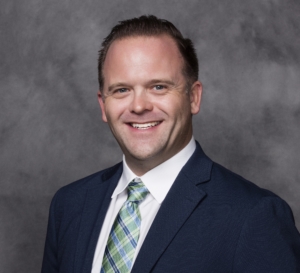
Title: Finding Profitable Space - Product Development in the emerging Additive Concrete Manufacturing Industry
Keynote Speaker
Dr. Grady Lonigan
Director of Operations and Business Development, Pikus 3D LLC, USA
Abstract
The emergence of additive manufacturing with concrete in recent years has lead many researchers, academics, mortar manufacturers, robotics companies, and businesses into advanced research and development with the goal of producing sustainable and profitable solutions. The transition from capability to profitability determines the likelyhood for long term market acceptance and adoption. New technologies and market disruptors face a myriad of obstacles from code compliance, materials testing standards, business profitability planning, sustainability and end of life cycle use, to elevated costs at inception, generational advancements, and the market’s reluctance to change. When assessing first and second mover advantages in a given space, we must first answer one simple question, what problems are we working to solve? How do we develop solutions to improve the likelihood of adoption in the market? And what proven methods are available to us to gauge if we are on the right track? Over the course of the presentation we will discover the path from market research and design, through product development runway creation, to sustainability and profitability. Utilizing industrial design principles for manufacturing, we will develop a working process for the attendees looking into the business side of Additive Manufacturing with Concrete to turn the corner from capability to profitability and beyond.
Biography
Grady Lonigan is a concrete industry veteran in the United States. His career has led him across various sectors of concrete construction, including but not limited to Industrial Plants, Bridges, Government/Military, Hospitals, Hospitality, Distribution Centers, Commercial Office, University Labs, 2+ million square foot parking structures, operating in a variety of positions ranging from project engineer through Senior management positions completing over $600 million in contracted concrete projects. His current role as the Director of Operations and Business Development for Pikus 3D LLC, has him focusing on products and solutions for the Commercial and Industrial Construction Industry.
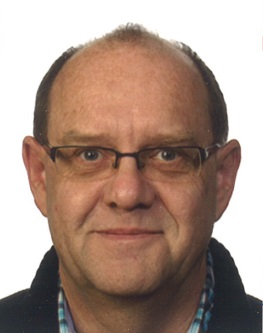
Title: Tuning Structure and Properties of Additively Manufactured Metallic Materials
Keynote Speaker
Prof. Dr. Jurgen Eckert
Chair of Materials Physics, Montanuniversität Leoben, Austria
Abstract
Additively manufactured metallic materials exhibit excellent mechanical strength. However, they often fail prematurely owing to external defects inducing crack initiation. Cracks then propagate through grain boundaries and/or cellular boundaries that may contain brittle second phases. This work investigates the premature failure mechanisms in selective laser melted (SLM) materials. A submicron structure containing semi-coherent precipitates is distributed in a discontinuous but periodic fashion along cell boundaries. Alternatively, martensitic phases are used to create alloys with modulation of phases and different strengthening mechanisms. The observed hierarchical microstructure combining different phases spanning over different length scales, consisting of remelted zones and track core regions at the macro-scale, regions with elongated columnar grains and equiaxed grains at the micro-scale, martensitic laths at the submicron-scale, and a high density of dislocations and stacking faults at the nano- and atomic scale leads to outstanding mechanical properties. The mechanisms determining strength and ductility are discussed in terms of the hierarchical microstructure and internal defects. The cellular structure with a high density of dislocations along their boundaries and the martensitic structure are the reasons for strengthening, while the hierarchical microstructure provides appropriate ductility. Martensitic transformation induced plastic bending of residual FCC plates helps to balance different plastic strains within the heterogeneous structure. This work provides a material design approach for creating hierarchically structured additively manufactured materials with improved strength-ductility tradeoff provided that premature failure is alleviated.
Biography
Jürgen Eckert is Director of the Erich Schmid Institute (ESI) of Materials Science of the Austrian Academy of Sciences and Chair Professor of Materials Physics at Montanuniversität Leoben, Austria. His main research interests are materials physics, metastable materials as well as design and synthesis of advanced high performance materials for structural and functional applications. He has published more than 1200 scientific papers, holds 24 patents, received several honors and awards, and is a member of several Academies and Asociations.
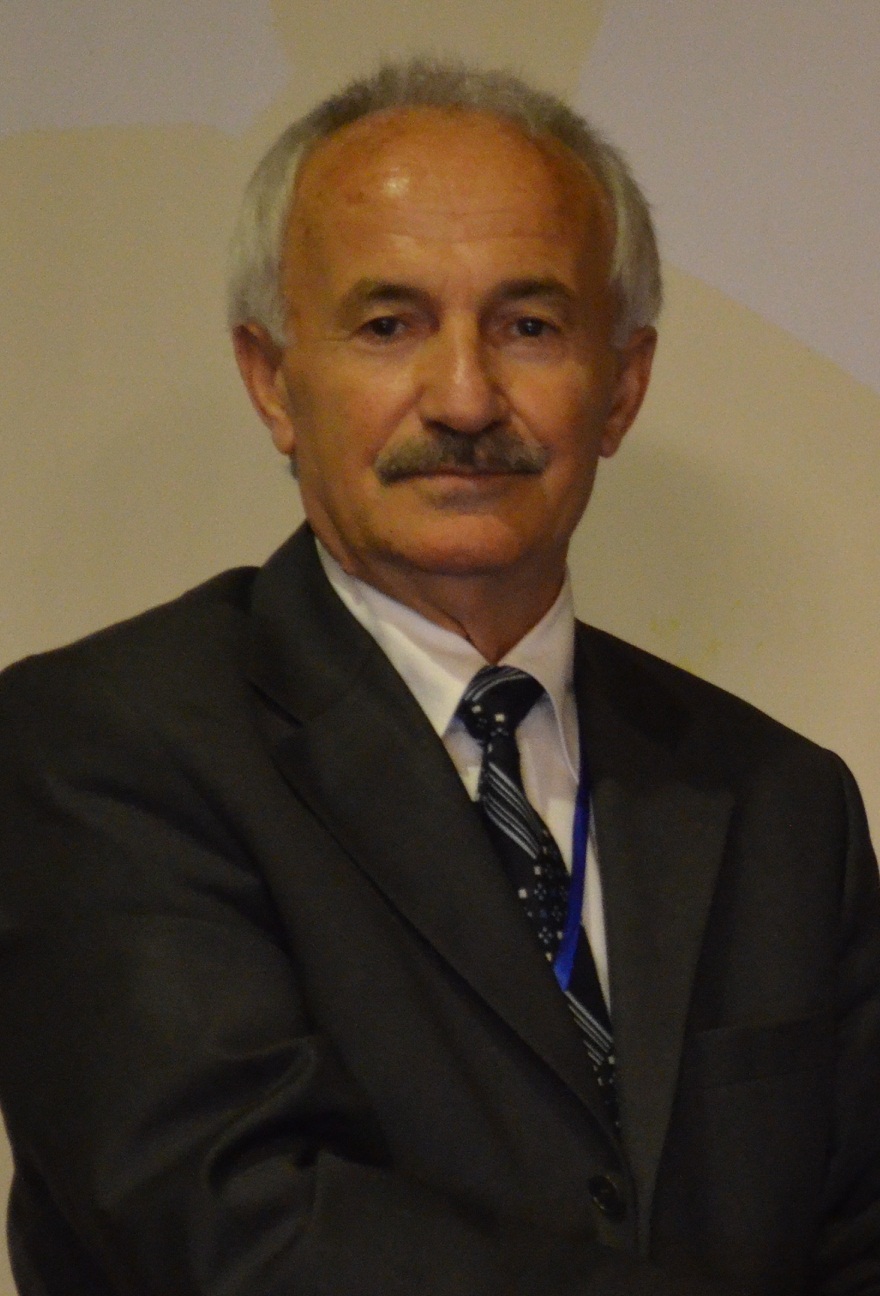
Title: Thermomechanical Processes and Reactions Governing Shape Reversibility and Pseudoelasticity in Shape Memory Alloys
Keynote Speaker
Prof. Dr. Osman Adiguzel
Firat University, Turkey
Abstract
Shape memory alloys take place in a class of advanced materials by exhibiting a peculiar property called shape memory effect. These alloys have dual characteristics, thermoelasticity and superelasticity from viewpoint of reversibility, and they are functional materials with these properties. These alloys exhibit these properties in the beta phase field at the phase diagrams, physical mechanical properties change with the variation of temperature. Thermoelasticity is initiated by thermomechanical processes on cooling and deformation and performed thermally on heating and cooling, with which shape of material cycles between original and deformed shapes in bulk level in reversible way. Low temperature phase of these alloys is soft phase, this deformation is plastic deformation, with which strain energy is stored in material and released on heating by recovering the original shape. Superelasticity is performed mechanically by stressing and releasing in elasticity limit at a constant temperature in parent phase field, and shape recovery occurs instantly and simultaneously upon releasing. Parent phase is hard phase, and superelasticity exhibits elastic material behavior. Thermoelasticity is governed by thermal and mechanical reactions, thermal and stress induced martensitic transformations on cooling and stressing, and performed thermally on heating and cooling after first cooling and stressing processes. Superelasticity is governed by stress induced transformation, and ordered parent phase structure turns into the detwinned structures with stressing.
Thermal induced martensite occurs on cooling with the cooperative movements of atoms in <110> -type directions on the {110}-type plane of austenite matrix, along with lattice twinning and ordered parent phase structures turn into twinned martensite structures. The twinned structures turn into detwinned martensitic structures with deformation by means of stres induced transformation. Lattice Twinning is result of lattice invariant shears, with which martensite variants occur in self-accommodating manner and consists of lattice twins. The twinning occurs with internal stresses, while detwinning occurs with the external stresses. Additionally, parent phase has high symmetry, and product martensite phases have low symmetry, and many other parameters also different at these phases.
Copper based alloys exhibit this property in metastable beta-phase region, which has bcc based structures at the parent phase field. Lattice invariant shear twinningis not uniform in these alloys and cause the formation of complex layered structures, depending on the stacking sequences on the close-packed planes of the ordered lattice, like 3R, 9R and 18R depending on the stacking sequences. Periodicity and unit cell is completed through 18 layers in 18R structures.
In the present contribution; x-ray and electron diffraction studies were carried out on two solution treated copper based CuZnAl and CuAlMn alloys. Electron and x-ray diffraction exhibit super lattice reflections. Specimens of these alloys were aged at room temperature, at which both alloys are in martensitic state. A series of x-ray diffractions were taken at different stages of aging in a long-term interval. X-Ray diffraction profiles taken from the aged specimens in martensitic conditions reveal that crystal structures of alloys chance in diffusive manner, and this result refers to the stabilization.
Key words: Shape memory effect, martensitic transformation, thermoelasticity, superelasticity, twinning and detwinning
Biography
Dr. Adiguzel graduated from Department of Physics, Ankara University, Turkey in 1974 and received PhD- degree from Dicle University, Diyarbakir-Turkey. He has studied at Surrey University, Guildford, UK, as a post-doctoral research scientist in 1986-1987, and studied were focused on shape memory effect in shape memory alloys. He worked as research assistant, 1975-80, at Dicle University and shifted to Firat University, Elazig, Turkey in 1980. He became professor in 1996, and he has been retired on November 28, 2019, due to the age limit of 67, following academic life of 45 years. He published over 80 papers in international and national journals; He joined over 120 conferences and symposia in international and national level as participant, invited speaker or keynote speaker with contributions of oral or poster. He served the program chair or conference chair/co-chair in some of these activities. In particular, he joined in last six years (2014 - 2019) over 60 conferences as Keynote Speaker and Conference Co-Chair organized by different companies. Also, he joined over 70 online conferences in the same way in pandemic period of 2020-2021. He supervised 5 PhD- theses and 3 M. Sc- theses. Dr. Adiguzel served his directorate of Graduate School of Natural and Applied Sciences, Firat University, in 1999-2004. He received a certificate awarded to him and his experimental group in recognition of significant contribution of 2 patterns to the Powder Diffraction File – Release 2000. The ICDD (International Centre for Diffraction Data) also appreciates cooperation of his group and interest in Powder Diffraction File.

Title: Fabricating Inconel 718-304L multi-materials via Laser powder bed fusion
Invited Speaker
Prof. Zhuangzhuang Liu
University of Science and Technology, China
Abstract
In the present work, the Inconel 718-304L multi-materials were manufactured via laser powder bed fusion. Cracks were observed in the interfacial area between Inconel 718 and 304L stainless steel. The mechanism of the cracks was discussed and the laser scanning parameters were optimized to successfully remove the cracks. Mechanical tests were performed and the results show that the fracture occurs at the 304L side instead of the interfacial area, indicating sufficient strength of the interface. The results demonstrate that multi-materials additive manufacturing has great potential in future application such as automobile and aerospace industry.
Biography
Bachelor degree at USTB, 2006-2010; Master degree at Central Iron and Research Institute, 2010-2013; Doctor degree at KU Leuven (Belgium), 2013-2017; Postdoctoral research at KU Leuven, 2017-2020; Associate professor at USTB, 2020-now. Research direction: 1. Additive manufacturing of high temperature alloys (Ni-, Fe-, Ti-, etc.); 2. Development of novel technologies for additive manufacturing; 3. Rapid solidification and heat treatment.
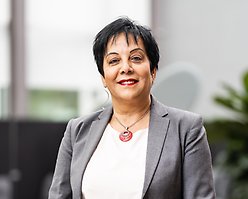
Title: Skills and education issues in the development of additive manufacturing
Plenary Speaker
Dr. Sima Valizadeh
Sandbacka Science Park, Sweden
Abstract
The promotion of additive manufacturing (AM) as a set of enabling technologies has been a prominent feature to revolutionising the industrial landscape. Due to AM technologies, differences from traditional manufacturing technologies have removed many of the manufacturing restrictions that may previously have compromised a designer’s ability to make the product desirability of consumer products because. Interest in additive manufacturing (AM) continues to grow in many industries aside from requirement of a distinct set of human and capital resources. The high demand for jobs in AM design, engineering and production has overtaken the supply of workers, particularly for engineers with AM experience. In order to meet the challenges of a digital and connected industry (Industry 4.0) where additive manufacturing (AM / 3DP) plays a significant role, the education and training issues identified to enable the effective deployment of AM technologies in the short to long-term. Stating with the AM industry needs to understand what skills are demanded by the industry, and what sort of talent is required to enable the industry growth and accelerate innovation to support businesses in various industries including engineering, manufacturing. On the other hand the digital transformation journey and industrial adoption of AM as a new digital manufacturing for the industry and small and medium-sized enterprises involves making large changes at the organizational level and re-skilling employees, which is generally demand a high to cover the IT and machinery expenses.
In this connection, to overcome the AM workforce skill gaps the concept of ongoing feasibility study project called “AM on the road” will be presented. The aim of the AM mobile concept is to develop and provide the foundation of knowledge and capabilities within the industry sector, such as “R&D know-how, advanced process development, engineering skills, and manufacturing competencies related to AM technology. The versatility of mobile AM on the road relies on the solution to overcome logistic barriers and ensuring continuous printing on demand and quick supply of parts directly at the site of interest. In addition, to the benefits of creating a theoretical, experimental education platform it is promising pathways to conceptualize the challenges faced by groups of small enterprises when adopting new technologies and a decentralized policy effort to systematically increase the use of advanced manufacturing technologies successfully and realize AM technology manufacturing capabilities within industry.
Biography
Dr. Sima Valizadeh is working as a CTO at Sandbacka Science Park in Sweden. Her focus is to develop the strategic technologies through fossil-free transportation, Sustainable Energy System, Digital transition of small and medium-sized enterprises and support them to explore the potential benefits and challenges of AM adoption across products process development. In addition, she supports the team with day-to-day management operation and deployment of effective inclusive innovation mechanism. Sima holds a PhD in Thin Film Physics and has over 33 years leadership experience in multi-Site manufacturing, developing solutions in Advanced Manufacturing for several engineering organizations & industries. To increase the visibility of women and diversity inclusion in the additive manufacturing industry she is acting in Women in 3D printing as an ambassador in Sweden.
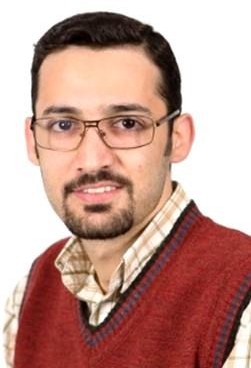
Title: Potentials of Microtechnology and Miniaturization for the Fabrication of Advanced Materials
Invited Speaker
Dr. Afshin Abrishamkar
McMaster University, Canada
Abstract
Miniaturization techniques have received remarkable interest over the past few decades as they allow for minimal material consumption, superior control over operational conditions, and the possibility to fine-tune the properties of the materials. Among those, microfluidics technologies have emerged as an appealingclass paving the way for the miniaturization of fluidic processesfor various applications. On the other hand, recent advances in the fabrication of advanced materials have expanded the application of these materials in various fields of science and technology such as biomedical engineering, biochemistry, healthcare, nanotechnology, and sensors. Despite the extensive progress in the synthesis of advanced materials, the majority of studies investigate their fabrication processunder equilibrium conditions, where only the thermodynamically stable species can be obtained. This limitation not only is a drawback for the proper understanding of the process but also hampers the effective fabrication of materials with a desired structure and functionality. To tackle this limitation, microfluidic technologies have been shown to be capable of pushing the system toward out-of-equilibrium conditions, which broaden the scope of the advanced materials that can be achieved, which are unattainable using existing conventional methods. Although most of the microfluidic approaches employ polymeric chips, devices made via 3D printing or additive manufacturing have been also shown effective for microfluidic experimentations. These devices benefitfrom higher resistance against organic solvents, may be fabricated rapidly and reproducibly using 3D printing techniques, and their design can be adjusted easilyby simply modifying their drawn design using drawing software.
Biography
Afshin Abrishamkar received his B.Sc. from IUT (Iran), during which he spent an exchange period at CEFET-MG (Brazil), and M.Sc., with distinction, from LUT (Finland). He earned his Ph.D. from ETH Zurich (Switzerland), followed by postdoctoral research at PSL Research University (France) prior to joining McMaster University (Canada) as a postdoctoral fellow. He has been the recipient of several honors/awards including IAESTE Internship Abroad Scholarship (2009), LUT Research Fellowship (2013), Excellence in Studies Award (2014), European Cooperation in Science & Technology Travel Award (2017), Meetings International Young Scientist Award (2020), and 2020 GDR Micro-Nano-Fluidics Young Researcher in Microfluidics Award (2021).
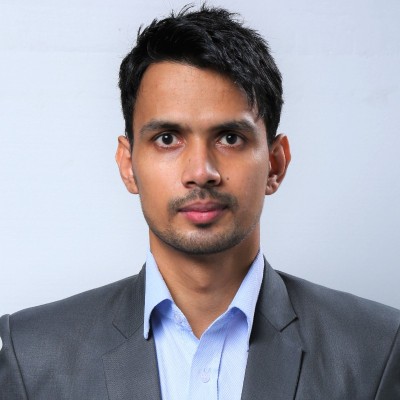
Title: Selection of Heat Treatment Furnaces for Metal 3D printing
Invited Speaker
Mr. Aliya Rain
NORMANTHERM, Suzhou Normanbell Materials Technology Co. Ltd, China
Abstract
3D printing/ Additive manufacturing is considered the next industrial revolution. In order to disrupt the traditional manufacturing processes of metal parts, 3D printing (3DP) has to solve two major problems; 1. Reduce the parts manufacturing time by optimizing the processes. 2. Reduce the waste of materials by developing metal alloys. Post-processing of these parts and materials is an important aspect that will ultimately boost 3DP applicability in industries such as Automobile, Aerospace, Medical, etc.
There is a need for compact, precise and fast processing heat treatment furnaces for post processing. In order to solve this need, we have developed NORMANBELL furnaces in the Chinese market and NORMANTHERM furnaces for the global market of metal 3DP. The main factors to be considered for the selection of best-fit furnaces are; work materials, print bed size, the precision required, strength, and application of the parts. From this presentation, audiences can learn about the need for metal 3D printing heat treatment, different types of furnaces, and their selection process.
Keywords:
Metal 3D Printing, Heat treatment process, vacuum furnaces, annealing, sintering, post-processing process
Biography
Aliya Rain has completed his masters’ degree in Aerospace Engineering, from Beijing Institute of Technology, China. Since 2020, he has been working as a sales engineer and director of overseas business development at NORMANTHERM, Suzhou Normanbell Materials Technology Co. Ltd., Jiangsu, China. He has published 2 academic research papers, one of them winning the prize of the excellent paper award. Also, he has written several online articles related to metal 3d printing, heat treatment, and vacuum furnaces.
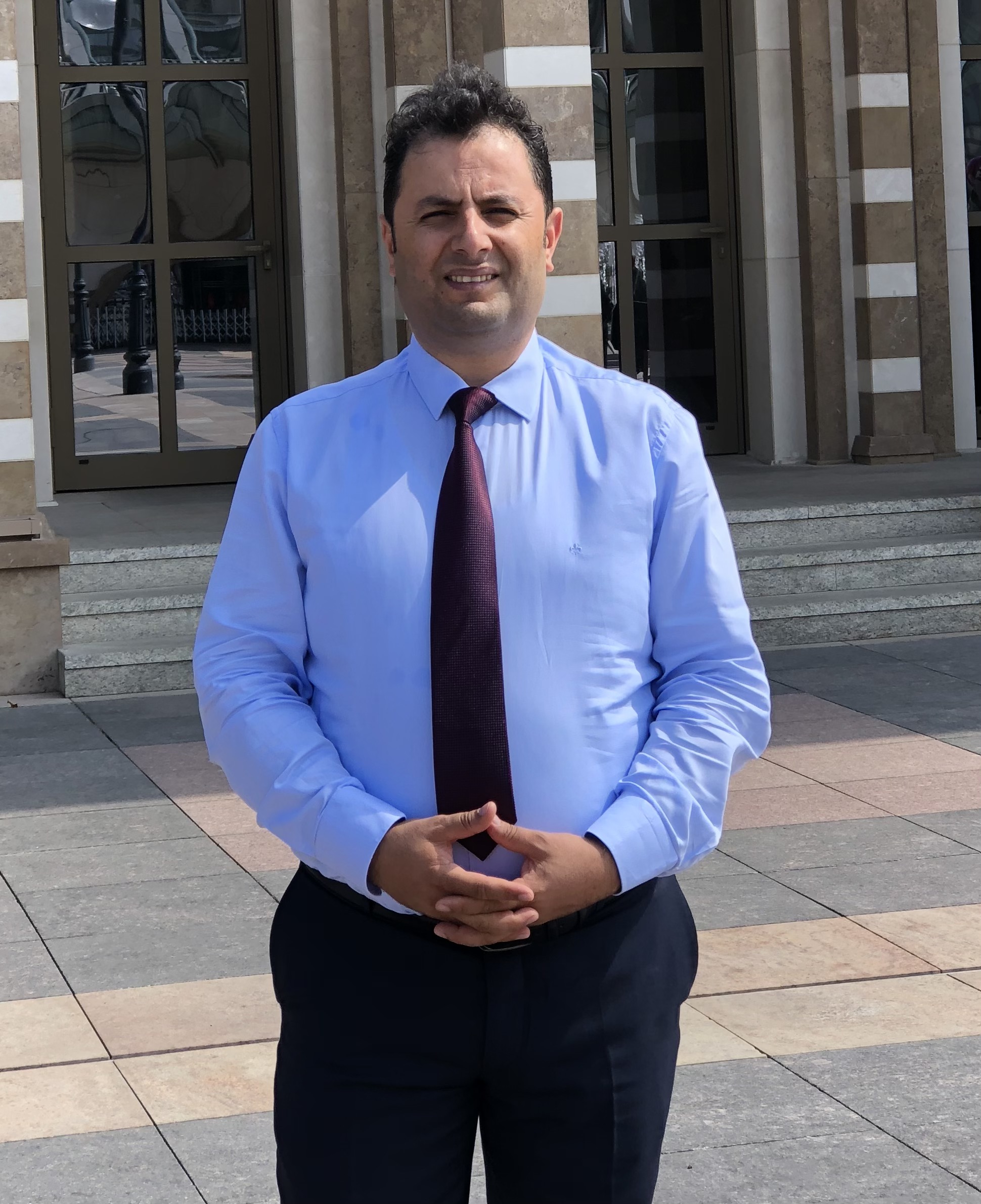
Title: 3D All-Carbon Hybrids For High-Performance Photonic and Optoelectronic Devices
Keynote Speaker
Dr. Bayram Gunduz
Malatya Turgut Özal University, Turkey
Abstract
Carbon is one of the basic elements of our planet, and all living species contain carbon, but its pure forms also show unique properties. All-carbon composites are carbon materials reinforced with other carbon materials, typically nanostructures such as carbon nanofibers or nanotubes, and there are many all-carbon materials with useful and unique properties. In particular, hybrids with three-dimensional (3D) structure obtained by a green hydrothermal process are preferred more than those with basic 2D structure due to the large specific surface area offered and the rapid access of electrolyte ions in the unique 3D graphene network.
In this talk, I will talk about the importance and current development of 3D all-carbon hybrids for high-performance photonic and optoelectronic devices. In a comprehensive way, I will talk about the advantages and disadvantages of 3D all-carbon hybrids for photonic and optoelectronic applications.
Biography
Dr. Bayram Gunduz received his bachelor’s degree in Physics from Firat University, Elazig, Turkey, 2001–2005, master degree from Solid State Physics, Firat University, 2005–2007, PhD degree from Solid State Physics, Firat University, 2007–2011. He was the First of the Physics Department for 8 consecutive terms (4 years) and completed the Physics Department as the FIRST of the DEPARTMENT. He was research assistant in Solid State Physics, Mus Alparslan University, Turkey, 2009–2011 and was Assist. Prof. Dr. in Department of Science Education, Mus Alparslan University, 2011–2017. He was an Assoc. Prof. Dr. in the same department and university, 2017-2019. He is currently an Assoc. Prof. Dr. in Malatya Turgut Özal University, since November 2019. His main achievements include organic semiconductors and optoelectronic materials: (i) electrical, optical, photonic and optoelectronic properties; (ii) fabrication of electronic and optoelectronic devices and and investigation their photophysical properties and applications such as Schottky diode, P–N heterojunction diode, metal–insulator–semiconductor junctions, solar cells, thin-film transistor, photodiode. (B) He has many articles (more than 70) published in SCI, SCI-Exp journals, which have high impact factors and has about 880 citations to his studies.
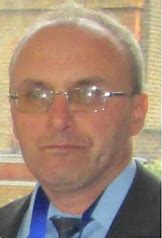
Title: Reconstruction Of Multidimensional Data On Intelligent Technology And Artificial Intelligence
Keynote Speaker
Prof. Dariusz Jacek Jakobczak
Koszalin University of Technology, Poland
Abstract
Artificial Intelligence is applied for prediction and calculations of unknown values of data or coordinates. Decision makers, academicians, researchers, advanced-level students, technology developers, and government officials will find this text useful in furthering their research exposure to pertinent topics in AI, computer science, numerical analysis or operations research and assisting in furthering their own research efforts in these fields. Proposed method, called Two-Points Smooth Interpolation (TPSI), is the method of 2D curve interpolation and extrapolation using the set of key points (knots or nodes). Nodes can be treated as characteristic points of data for modeling and analyzing. The model of data can be built by choice of probability distribution function and nodes combination. TPSI modeling via nodes combination and parameter γ as probability distribution function enables value anticipation in AI, risk analysis and decision making. Two-dimensional curve is extrapolated and interpolated via nodes combination and different functions as continuous probability distribution functions: polynomial, sine, cosine, tangent, cotangent, logarithm, exponent, arc sin, arc cos, arc tan, arc cot or power function.
Biography
Prof. Dariusz Jacek Jakóbczak was born in Koszalin, Poland, on December 30, 1965. He graduated in mathematics (numerical methods and programming) from the University of Gdansk, Poland in 1990. He received the Ph.D. degree in 2007 in computer science from the Polish – Japanese Institute of Information Technology, Warsaw, Poland. From 1991 to 1994 he was a civilian programmer in the High Military School in Koszalin. He was a teacher of mathematics and computer science in the Private Economic School in Koszalin from 1995 to 1999. Since March 1998 he has worked in the Department of Electronics and Computer Science, Koszalin University of Technology, Poland and since October 2007 he has been an Assistant Professor in the Chair of Computer Science and Management in this department. His research interests connect mathematics with computer science and include computer vision, artificial intelligence, shape representation, curve interpolation, contour reconstruction and geometric modeling, numerical methods, probabilistic methods, game theory, operational research and discrete mathematics.
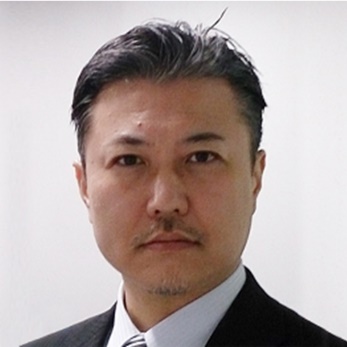
Title: Stereolithographic Additive Manufacturing for Functional Ceramic Components
Keynote Speaker
Prof. Soshu Kirihara
Joining and Welding Research Institute Osaka University, Japan
Abstract
In stereolithographic additive manufacturing (STL-AM), 2-D cross sections were created through photo polymerization by UV laser drawing on spread resin paste including nanoparticles, and 3-D models were sterically printed by layer lamination. The lithography system has been developed to obtain bulky ceramic components with functional geometries. An automatic collimeter was newly equipped with the laser scanner to adjust the beam diameter. Fine or coarse beams could realize high resolution or wide area drawings, respectively. As the row material of the 3-D printing, nanometer sized metal and ceramic particles were dispersed into acrylic liquid resins at about 60 % in volume fraction. These materials were mixed and deformed to obtain thixotropic slurry. The resin paste was spread on a glass substrate with 50 μm in layer thickness by a mechanically moved knife edge. An ultraviolet laser beam of 355 nm in wavelength was adjusted to 50 μm in variable diameter and scanned on the spread resin surface. Irradiation power was automatically changed for an adequate solidification depth for layer bonding. The composite precursors including nanoparticles were dewaxed and sintered in the air atmosphere. In recent investigations, ultraviolet laser lithographic additive manufacturing (UVL-AM) was newly developed as a direct forming process of fine metal or ceramic components. As an additive manufacturing technique, 2-D cross sections were created through dewaxing and sintering by UV laser drawing, and 3-D components were sterically printed by layer laminations with interlayer joining. Through computer-aided smart manufacturing, design, and evaluation (Smart MADE), practical material components were fabricated to modulate energy and material transfers in potential fields between human societies and natural environments as active contributions to Sustainable Development Goals (SDGs).
Biography
Soshu Kirihara is a doctor of engineering and a professor of Joining and Welding Research Institute (JWRI), Osaka University, Japan. In his main investigation “Materials Tectonics as Sustainable Geoengineering” for environmental modifications and resource circulations, multi-dimensional structures were successfully fabricated to modulate energy and materials flows effectively. Ceramic and metal components were fabricated directly by smart additive manufacturing, design and evaluation (Smart MADE) using high power ultraviolet laser lithography. Original stereolithography systems were developed, and new start-up company “SK-Fine” was established through academic-industrial collaboration.
“ Will be updated soon...”
+91 9491 456 452
Door No.200, Immidhihalli Main Road, Whitefield-560066, Bangalore, India
About Us
Global Scientific Guild organizes conferences and webinars to promote quality research and real world impact in an atmosphere of true international co-operation between scientists, doctors, professors, practitioners, engineers and industry by bringing together the world class renowned personalities to discuss the latest developments and innovations at one common platform.